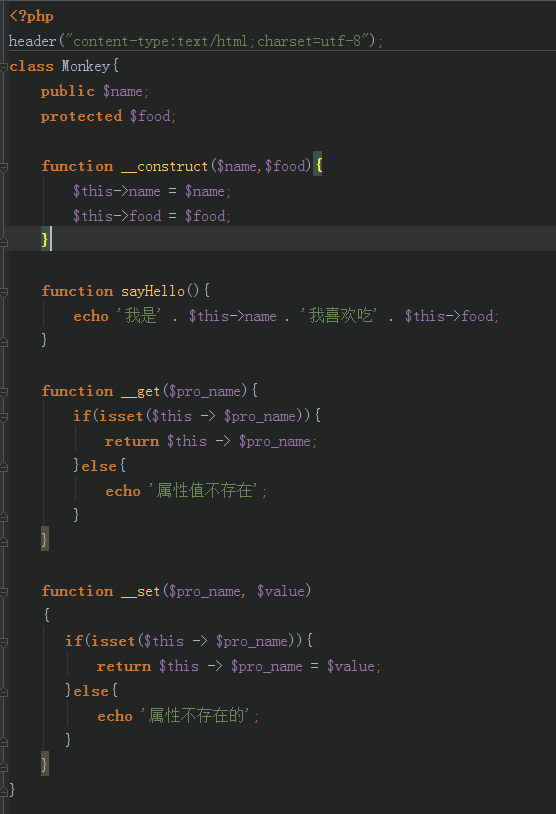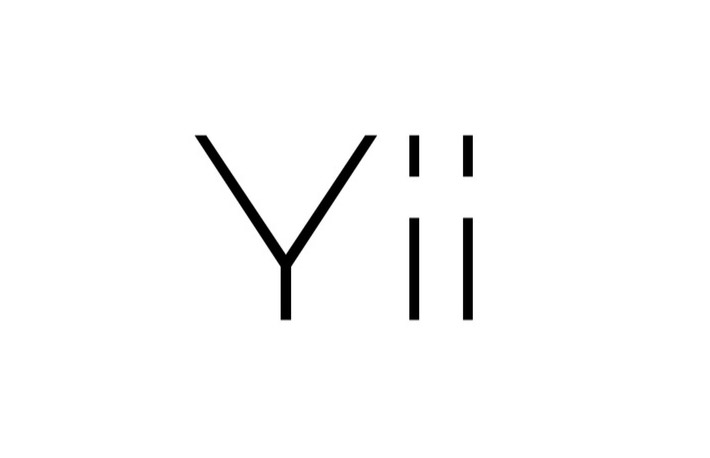How to use GET()? Summary of php GET() instance usage
In some PHP built-in functions (such as mkdir), adding @ in front can shield the errors thrown by the function So how do custom functions achieve this? I tried throw new Exception and trigger_error but they couldn't be blocked by @ Additional instructions: It's like this. For example, I want to write a JsonFile::get() method that throws an error when the file does not exist, throws an error when the path is illegal, throws an error when decoding fails, and returns false. When the user cares about the error message, he can catch and handle it by himself; when he doesn't care about the error message and just wants to get the file content or false (failure), he can call @JsonFile::get() like this Mainly for convenience. How to implement such a custom method (or function)? Or is my way of thinking not very good? Is there a convenient and reasonable implementation method? 1. How to prevent the custom function in PHP from throwing an error when containing @? Introduction: In some PHP built-in functions (such as mkdir), adding @ in front can shield the error thrown by the function. Then since
1. Recommended articles about the php trigger_error() function 10 articles

Introduction: In some PHP built-in functions (such as mkdir), adding @ in front can Mask the errors thrown by this function. So how can a custom function achieve this? I tried throw new Exception and trigger_error and they couldn't be blocked by @. Additional explanation: It's like this. For example, I want to write a JsonFile::get() method that throws an error when the file does not exist and throws an error when the path is illegal. When decoding fails, an error is thrown and false is returned. When the user cares about the error message, he or she can capture and handle it by themselves;...
2. Share the newly introduced class Optional in Java8 Example code

Introduction: Optional is a newly introduced class in Java 8. This is a container object that can be null. . If the value exists, the isPresent() method will return true, and calling the get() method will return the object.
3. Detailed explanation of magic method __get() instance (php advanced object-oriented tutorial 2)

Introduction: When you see this name, you have a very high-end feeling. Yes, magic methods are indeed advanced. So, what is a magic method? In PHP, methods starting with two underscores are called "Magic methods". For example, the __construct(), __destruct (), __clone() mentioned before, and __call(),,__get(), __set(),__sleep(), __wakeup(), __toString(), __autoload(), etc., They are all magic methods.
4. POST() method and GET() method for submitting form data in php

Introduction: Obtaining form data is the most commonly used operation in form applications. It is often necessary for the PHP background to obtain various data submitted by users in the foreground form page from the foreground page. There are two ways to transfer form data, one is the POST() method, and the other is the GET() method. The specific method of obtaining data is specified by the method attribute of the
5. Use jQuery to sort the unordered list

##Introduction: The example in this article describes how jQuery implements the sorting function of unordered lists. Share it with everyone for your reference. The details are as follows: The principle of using jQuery to sort the unordered list is: get all the list items in the unordered list, convert them into array form, use JavaScript functions to sort them and output them again. The jQuery functions used include ready(), get(), text(), each(), append() and Java
6. python dict.get( ) and dict['key']

Introduction: The following editor will bring you a detailed explanation of the difference between python dict.get() and dict['key']. The editor thinks it’s pretty good, so I’ll share it with you now and give it as a reference. Let’s follow the editor to take a look
7. Yii Framework Official Guide Supplement Series 29 - Cache: Data Cache

Introduction: Data caching stores some PHP variables in the cache and then retrieves them from the cache later. For this purpose, the base class CCache of caching components provides the two most commonly used methods: set() and get(). To store a variable in the cache...
8. Simple example of the definition and usage of PHP object-oriented programming classes

Introduction: This article mainly introduces the definition and usage of PHP object-oriented programming classes, and analyzes the definition and instantiation of PHP classes in the form of examples. , __set() and __get() specific usage tips, friends in need can refer to
9. Concise summary of Magic Method in PHP classes

Introduction: This article mainly introduces a concise summary of the Magic Method in the PHP class. These Methods include __construct(), __destruct(), __call(), __callStatic(), __get(), __set(), __toString(), etc. Friends in need can refer to
10. Detailed explanation of ajax - get() method instance in jQuery

##Introduction: In JQuery You can use get, post and ajax methods to transfer data to the server. Next, through this article, I will introduce you to a detailed example of the ajax-get() method in jquery. Friends in need can refer to it
[Related Q&A recommendations]:
java - Personal push "transparent message" configuration push target
beautifulsoup - python requests Stuttering during high-frequency refresh
javascript - In angular 1.2.0 $http.get().success(), the error success is not defined is reported?
javascript - God help! Regarding the problem of the json type in $.get()
android - A newbie has a question about the handler sending msg.
The above is the detailed content of How to use GET()? Summary of php GET() instance usage. For more information, please follow other related articles on the PHP Chinese website!

Hot AI Tools

Undresser.AI Undress
AI-powered app for creating realistic nude photos

AI Clothes Remover
Online AI tool for removing clothes from photos.

Undress AI Tool
Undress images for free

Clothoff.io
AI clothes remover

Video Face Swap
Swap faces in any video effortlessly with our completely free AI face swap tool!

Hot Article

Hot Tools

Notepad++7.3.1
Easy-to-use and free code editor

SublimeText3 Chinese version
Chinese version, very easy to use

Zend Studio 13.0.1
Powerful PHP integrated development environment

Dreamweaver CS6
Visual web development tools

SublimeText3 Mac version
God-level code editing software (SublimeText3)

Hot Topics
 1663
1663
 14
14
 1420
1420
 52
52
 1313
1313
 25
25
 1266
1266
 29
29
 1239
1239
 24
24
 Explain different error types in PHP (Notice, Warning, Fatal Error, Parse Error).
Apr 08, 2025 am 12:03 AM
Explain different error types in PHP (Notice, Warning, Fatal Error, Parse Error).
Apr 08, 2025 am 12:03 AM
There are four main error types in PHP: 1.Notice: the slightest, will not interrupt the program, such as accessing undefined variables; 2. Warning: serious than Notice, will not terminate the program, such as containing no files; 3. FatalError: the most serious, will terminate the program, such as calling no function; 4. ParseError: syntax error, will prevent the program from being executed, such as forgetting to add the end tag.
 PHP and Python: Comparing Two Popular Programming Languages
Apr 14, 2025 am 12:13 AM
PHP and Python: Comparing Two Popular Programming Languages
Apr 14, 2025 am 12:13 AM
PHP and Python each have their own advantages, and choose according to project requirements. 1.PHP is suitable for web development, especially for rapid development and maintenance of websites. 2. Python is suitable for data science, machine learning and artificial intelligence, with concise syntax and suitable for beginners.
 Explain secure password hashing in PHP (e.g., password_hash, password_verify). Why not use MD5 or SHA1?
Apr 17, 2025 am 12:06 AM
Explain secure password hashing in PHP (e.g., password_hash, password_verify). Why not use MD5 or SHA1?
Apr 17, 2025 am 12:06 AM
In PHP, password_hash and password_verify functions should be used to implement secure password hashing, and MD5 or SHA1 should not be used. 1) password_hash generates a hash containing salt values to enhance security. 2) Password_verify verify password and ensure security by comparing hash values. 3) MD5 and SHA1 are vulnerable and lack salt values, and are not suitable for modern password security.
 PHP in Action: Real-World Examples and Applications
Apr 14, 2025 am 12:19 AM
PHP in Action: Real-World Examples and Applications
Apr 14, 2025 am 12:19 AM
PHP is widely used in e-commerce, content management systems and API development. 1) E-commerce: used for shopping cart function and payment processing. 2) Content management system: used for dynamic content generation and user management. 3) API development: used for RESTful API development and API security. Through performance optimization and best practices, the efficiency and maintainability of PHP applications are improved.
 What are HTTP request methods (GET, POST, PUT, DELETE, etc.) and when should each be used?
Apr 09, 2025 am 12:09 AM
What are HTTP request methods (GET, POST, PUT, DELETE, etc.) and when should each be used?
Apr 09, 2025 am 12:09 AM
HTTP request methods include GET, POST, PUT and DELETE, which are used to obtain, submit, update and delete resources respectively. 1. The GET method is used to obtain resources and is suitable for read operations. 2. The POST method is used to submit data and is often used to create new resources. 3. The PUT method is used to update resources and is suitable for complete updates. 4. The DELETE method is used to delete resources and is suitable for deletion operations.
 PHP: A Key Language for Web Development
Apr 13, 2025 am 12:08 AM
PHP: A Key Language for Web Development
Apr 13, 2025 am 12:08 AM
PHP is a scripting language widely used on the server side, especially suitable for web development. 1.PHP can embed HTML, process HTTP requests and responses, and supports a variety of databases. 2.PHP is used to generate dynamic web content, process form data, access databases, etc., with strong community support and open source resources. 3. PHP is an interpreted language, and the execution process includes lexical analysis, grammatical analysis, compilation and execution. 4.PHP can be combined with MySQL for advanced applications such as user registration systems. 5. When debugging PHP, you can use functions such as error_reporting() and var_dump(). 6. Optimize PHP code to use caching mechanisms, optimize database queries and use built-in functions. 7
 Explain the difference between self::, parent::, and static:: in PHP OOP.
Apr 09, 2025 am 12:04 AM
Explain the difference between self::, parent::, and static:: in PHP OOP.
Apr 09, 2025 am 12:04 AM
In PHPOOP, self:: refers to the current class, parent:: refers to the parent class, static:: is used for late static binding. 1.self:: is used for static method and constant calls, but does not support late static binding. 2.parent:: is used for subclasses to call parent class methods, and private methods cannot be accessed. 3.static:: supports late static binding, suitable for inheritance and polymorphism, but may affect the readability of the code.
 How does PHP handle file uploads securely?
Apr 10, 2025 am 09:37 AM
How does PHP handle file uploads securely?
Apr 10, 2025 am 09:37 AM
PHP handles file uploads through the $\_FILES variable. The methods to ensure security include: 1. Check upload errors, 2. Verify file type and size, 3. Prevent file overwriting, 4. Move files to a permanent storage location.




